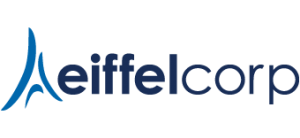
Developing content for a TV generation
Carol Dwyer is a live wire, she’s a ‘mature’ lecturer at False Bay College who has embraced technology in order to develop blended learning experiences that are entertaining, appropriate, and relevant to the topic as well as contextualized for the local student. Her inputs help us understand how to develop content for a TV generation.
Carol Dwyer started as a Life Orientation lecturer in the TVET sector. Over the past 10 years, she has transformed blended learning from a senior management strategy to an operational reality. As E-learning Manager she has implemented and promoted the use of a sophisticated Learning Management System (LMS) which all students have access to either off campus or in the well-established and fully functional open learning centers at their campuses.
Speaking at Eiffel Corp’s 20th celebration in Cape Town recently, Dwyer challenged educators to transform their academic teaching material into content that’s engaging, entertaining, relevant, contextualized and in manageable bite size chunks.
“Don’t let anyone tell you it requires a lot of money – it takes a mind shift, creativity and time,” she said.
“We’re teaching a TV generation, which means teaching material must include visual imagery, graphics, videos and cater for students you tend to have a short attention span.
“I based the blended learning system at False Bay College on two specific Learning Theories that seem to embody the way 21st Century Learners learn, namely Constructivism and Connectivism. In Constructivism the students construct knowledge or build knowledge from the information provided and their current world view. As, the educator, I assist this construction by providing scaffolding – it is like building Lego, you construct the next piece of information by building on top of what you already have – as each new piece is added and built on the student ends up constructing a full view.
“In Connectivism, learning is in the network. You’ll find someone who will tell you what you need to know when you need to know it, usually via Google. My job is to facilitate the student’s use of the information, not the content. Information is disposable, and it’s picked up again when needed,” she added.
The network can be digital such as the internet, but it can also be personal as in asking an expert in a particular field to explain a piece of content, concept or demonstrating a skill.
Lessons learned when creating blended learning:
- Presenting content in bite size chunks – we call this conceptual teaching – teaching a concept one at a time rather than just a lot of content
- Learner centered – self-paced, with continual testing loops and feedback
- Short lecture capture – for short attention spans
- Screen capture – using Camstudio – it is free and great for teaching functions on a computer
- Peer education – discussions, forums, self-made videos
“I believe technology is a tool, not a learning outcome. Technology is a tool that you use to leverage the teaching – it is not the teaching and will never replace the teacher.”
*This month we celebrate Women’s Day. On 9 August 1956 women in South Africa gathered to protest an unfair pass law. The success of this march was the unity amongst a diverse group of women from all over South Africa, coming together to have their voices heard. Forming a cornerstone in our South African society and a moral voice for our country. We would like to honour women who have an impact on the South African Education system.



